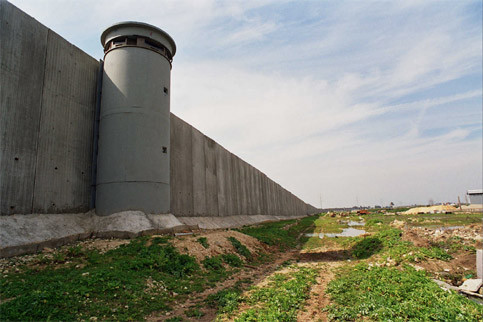Europeans who worked in colonial Africa would say, “Africa Wins Again” whenever some project went sideways. The point was that no matter how well-intended or well designed, the best ideas of Westerners would fail. The implied reason was that Africa was the way it was, because it was full of Africans. This expression must have been common during colonialism, as it always turns up in first-person accounts of the post-colonial years. There was simply no way to beat nature.
That’s what comes to mind whenever a Latin American country makes the news for some reason. A decade ago, libertarian economists like Tyler Cowen were sure that Argentina and Brazil were on their way to first world status. Sensible people knew that the Latin Way would eventually win. Argentina is back to begging the West for bailouts and Brazil is teetering on social and political collapse. It turns out that the Latin Way always wins too. There’s no beating nature.
Mexico just had an election and the winner is promising to prove every cold-hearted Anglo north of the border right about the nature of Mexico.
Veteran Leftist Andres Manuel Lopez Obrador has been elected president of Mexico, winning the largest landslide in his country’s recent history in a remarkable routing of what he terms “the mafia of power”.
Promising to combat corruption and drive down record crime rates, Mr Lopez Obrador captured 53 per cent of the vote, according to preliminary results – a historic victory for the party he created.
Voters decided in their millions to turn their backs on the two parties which have ruled Mexico for almost 100 years, and finally give him a chance – sending his supporters into a frenzy.
The American media will never honestly report about anything, so we can expect them to celebrate this guy as the antidote to Donald Trump. You just know they will find some way to link his rise to the election of Ocasio-Cortez. Alternatively, they will swear Trump caused it. It depends upon how things unfold. If chaos ensues, then you can be sure it will be blamed in Trump’s rhetoric. In reality, this is just Mexico being Mexico. Here’s a summary of AmLo’s platform:
- Amnesty to all drug cartels.
- No longer will work with U.S. immigration enforcement.
- Nationalize oil industry.
- Farm subsidies.
- Elimination of multinational corporate influence on farming.
- Support and assistance for economic growth plan:
- using •mass migration of Mexican nationals into Southern U.S.,
- create AmeriMex border region, and
- remittance of earnings back to Mexico as initiative for rapid domestic economic growth.
Now, in fairness to Mexicans, the two main parties have become so corrupt that voting for either is just a vote for the status quo. That means a country largely controlled by two murderous drug cartels and a political elite willing to protect them. Just how much money the Mexican ruling elite makes from the drug business is hard to know, but they have grown rich off the free trade scams operating at the border. They have also helped facilitate the waves of migrants entering the United States every year.
Obrador is probably a good result for Americans. He will no doubt make an excellent bad guy in the coming war with Mexico. That is where things are headed, whether anyone realizes it. The Mexican government is incapable of ending the flow of drugs into the US and they have no choice but to facilitate the flow of migrants. That means the border will have to be closed and most likely guarded by the US military. That is an option the public will support, if Mexico is led by a nutty Marxist who hates America.
Putting that aside, it is another reminder that Mexico is a failed state. The central government retains control of Mexico City and the immediate area surrounding it, but the rest of the country is controlled by drug cartels. One reason the political elite facilitates migration is they skim from the remittances back to Mexico, from their people living in America. Carlos Slim, the owner of the New York Times, owns the Mexican phone company, which means he gets a taste, every time Pablo calls home from America.
Those old enough to remember will note that NAFA was supposed to prevent this from happening. Instead, it has been a disaster for Mexico, making the people poorer, while their elites grew rich. Mexico was never going to withstand unfettered contact with the first world, for the simple reason it was never a modern country and is never going to be a modern country. The human capital of Mexico cannot sustain it. This is a reality of the human condition that people used to know, until there was money in pretending otherwise.
Now, America has a failed narco-state on its southern border, thanks to the greedy we politely call globalists. You will note that everything these pirates of the new economy touch eventually falls to pieces. That is because this form of economic activity can only thrive in chaos, so it works to create it. A disordered world, where sovereign people no longer have control of their borders, lurches inexorably toward chaos. Instead of Vikings raiding the West, the last 30 years has been men in suits raiding the West.
Chaos always results in a reaction and that reaction is usually authoritarian. That is what is happening in Mexico and will happen in Brazil and Argentina. If those countries are lucky, the authoritarians will be like Pinochet and the result will be a pruning of the political elite and the imposition of order. It is always a coin flip with strongmen. For every Peisistratus, who restores order and economic balance, you get a Nero. The history of Latin America suggests the latter is the way to bet, but maybe this time will be different.

